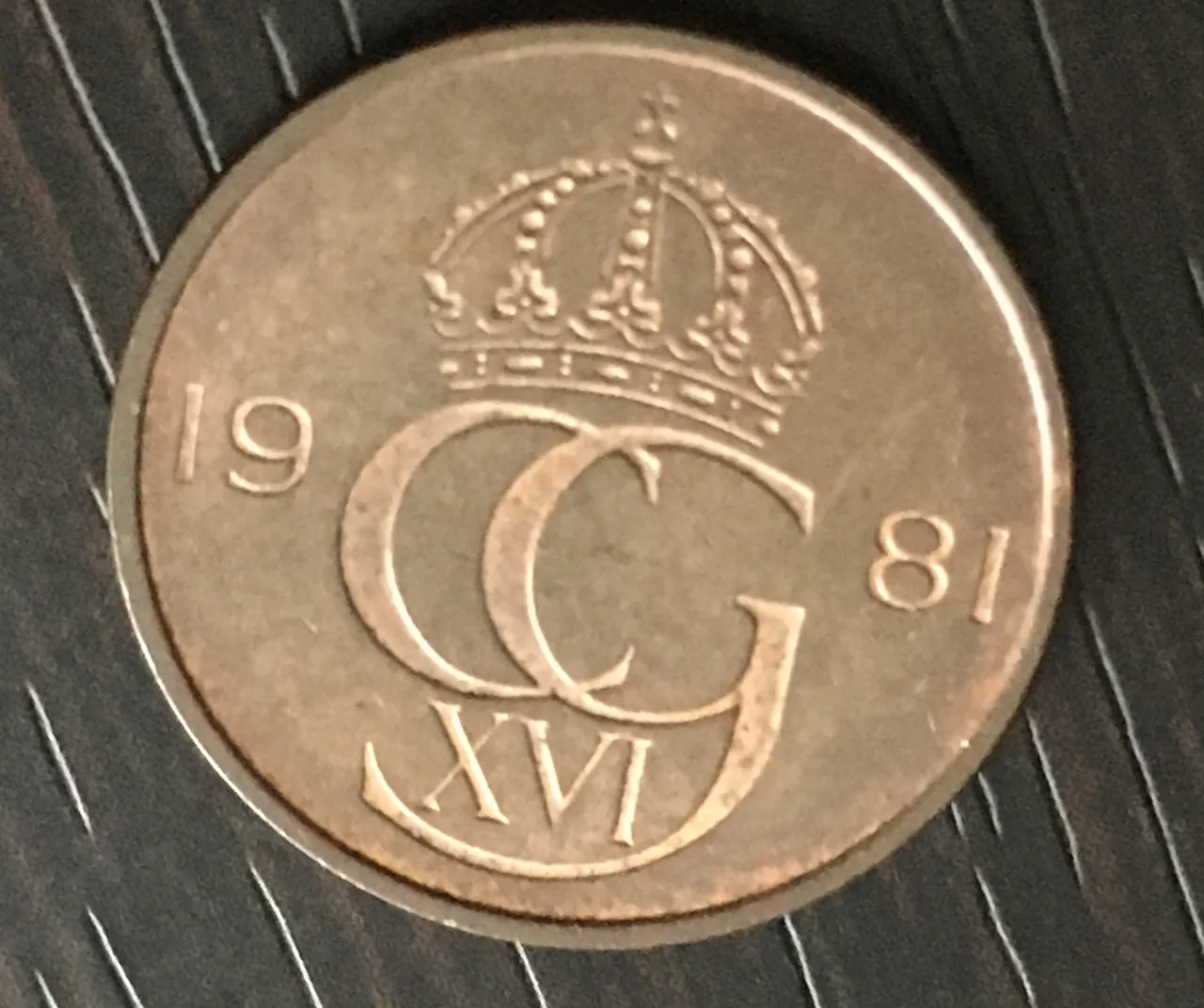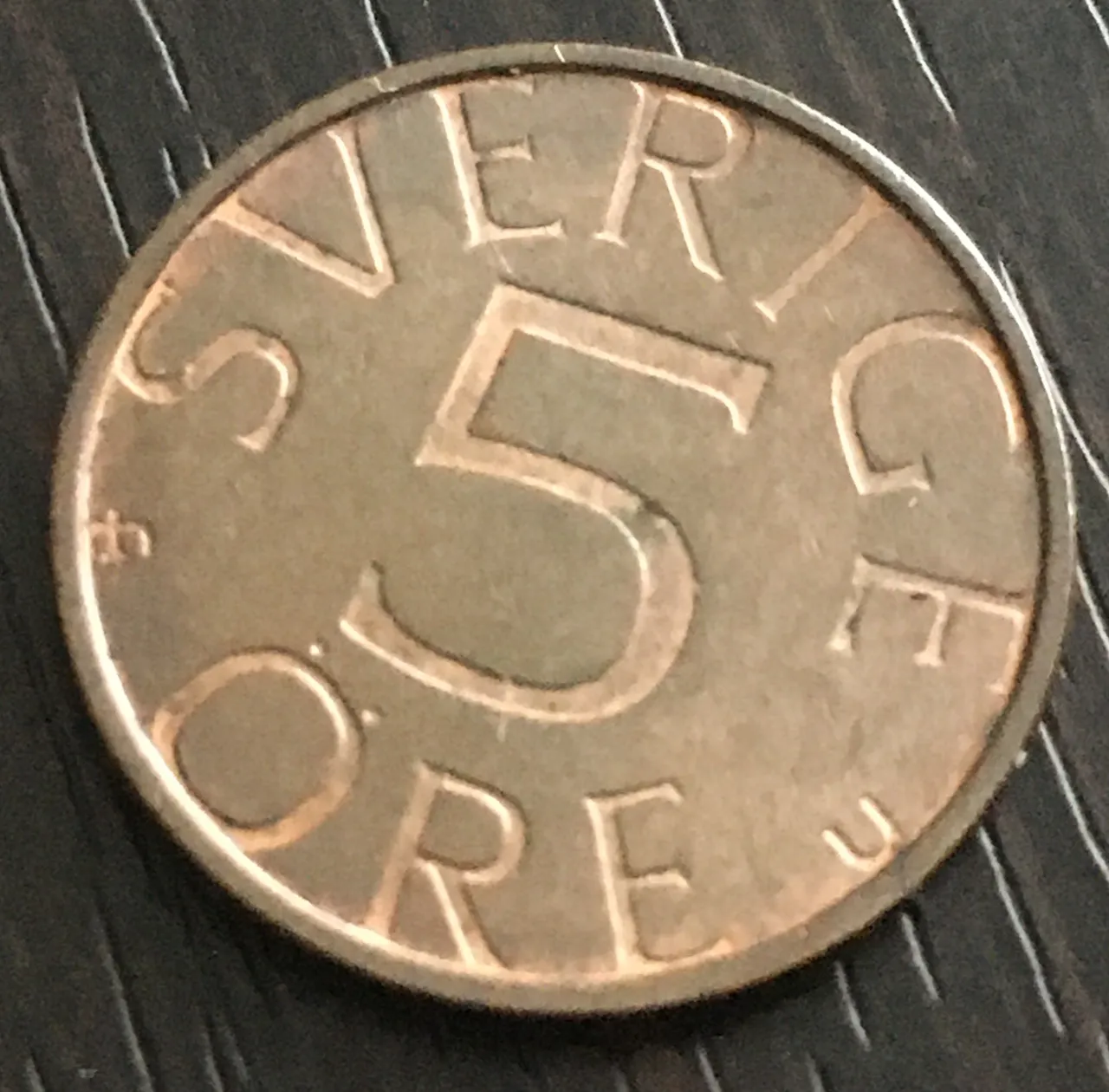
Привіт! Якщо доведеться подорожувати Швецією, то доведеться користуватися національною грошовою одиницею цієї країни — кроною. Й хоча розмінна монета, про яку піде мова, вже вийшла з обігу, вона викликає певний інтерес у колекціонерів-початківців, таких як я. Розглянемо бронзовий виріб з моєї колекції детальніше.
5 ере — це монета 1981 року. На 95% вона складається з міді. 4% складає цинк й 1% залишається на олово. Вага виробу 2.7 г, а розмір 18 мм.
Звичайно, що Швеція не відмовилася від розмінної монети. Але в наш час їх роль виконують крони. При цьому банкноти є номіналом по 500 та 1000 крон. У цьому році виповнюється 150 років з моменту введення в обіг національної валюти Швеції — крони. Перші розмінні монети в період між 1873 та 1876 роками виготовлялись зі срібла, а крони — з золота. Але вже на початку минулого століття дорогоцінним металам на заміну прийшли сучасні сплави з нейзильберу.
Реверс. 5 ере 1981 року виконана в традиційному для шведських монет стилі. У лівій частині можна побачити логотип МД, а у правій — початкову літеру прізвища РіксБанку (Центрального банку Швеції). Основну частину зворотної сторони монети займає цифра 5 та назва.

З лицьової сторони викарбувана монограма короля Швеції, а вище корона. Сама ж монограма ділить дату карбування монети на дві частини — 19 та 81. Виріб має гладкий гурт.
Гарно дня!
5 September 1981, Sweden. Coin of the era of Charles 16 Gustav
Hello! If you have to travel in Sweden, you will have to use the national currency of this country - the krona. And although the exchange coin in question has already gone out of circulation, it is of some interest to novice collectors such as myself. Let's consider a bronze product from my collection in more detail.
5 ere is a 1981 coin. 95% of it consists of copper. 4% is zinc and 1% remains for tin. The weight of the product is 2.7 g, and the size is 18 mm.
Of course, Sweden did not abandon the exchange coin. But nowadays their role is performed by crowns. At the same time, banknotes are in denominations of 500 and 1,000 crowns. This year marks the 150th anniversary of the introduction of Sweden's national currency, the krone. The first exchange coins in the period between 1873 and 1876 were made of silver, and crowns were made of gold. But at the beginning of the last century, precious metals were replaced by modern nickel silver alloys.
Reverse. 5 ere of 1981 is made in the style traditional for Swedish coins. In the left part you can see the logo of MD, and in the right part - the initial letter of the name of Riksbank (Central Bank of Sweden). The main part of the reverse side of the coin is occupied by the number 5 and the name.
The monogram of the King of Sweden is engraved on the front, and the crown is above. The monogram itself divides the minting date of the coin into two parts - 19 and 81. The product has a smooth band.
Have a nice day!